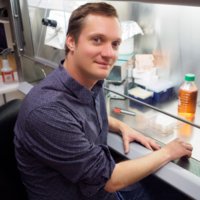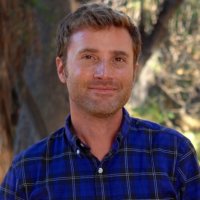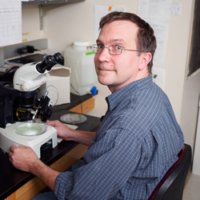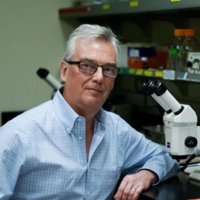
Faculty
Our highly decorated faculty include National Academy members, HHMI investigators, Macarthur awardees, and presidents of several professional societies. These prominent individuals and the rest of the DRB at both junior and senior levels use a variety of experimental systems to address their questions.
Megan Martik
Our team is focused on understanding the regulatory networks controlling the development of the neural crest from a multipotent stem cell population into unique derivatives. We study how these networks are re-used during adult repair processes, how these networks become dysregulated at the onset of disease, and how these networks evolve to give rise to morphological novelties.James Nuñez
The core interest of our group is to understand the regulatory principles of the human genome. Specifically, we investigate the molecular principles underlying epigenetic memory and inheritance in mammalian cells. We combine functional genomics CRISPR screens, cell biology, and biochemistry to answer our research questions.Ian Swinburne
Our laboratory studies how tissues, cells, and subcellular dynamics coordinate to generate organs and initiate physiologies. The lab’s current goal is to understand the mechanisms of hydraulic control within vertebrate organs. We combine multi-scale imaging, genetics, and physical approaches to uncover the principles underlying the formation and function of tissue-scale pressure relief valves in the ear and the eye.Gokul Upadhyayula
Our research interests bridge applied engineering with basic science. We are interested in mechanistic questions addressed at a molecular level using optical imaging acquired with high temporal and spatial resolution.Hernan Garcia
Our lab uses a combination of new technologies, quantitative experiments, and statistical mechanics in order to provide new insights about cellular decision making during development. In particular, we aim to link the specification of macroscopic body parts in an organism to the non-equilibrium molecular-scale processes inside single cells. The ultimate goal of this interdisciplinary research is to produce a predictive understanding of developmental programs which will enable the rational control of biological size, shape and function.Xavier Darzacq
By developing novel methods to study the rapid diffusive behavior and kinetics of transcription factors (TFs) in live cells, our lab strives to open a new window into the molecular dynamics of gene regulation. We are interested in the ways in which dynamic binding of proteins modulates the exquisite temporal regulation of transcription while navigating and possibly influencing genome organisation.Helen Bateup
Research in the Bateup lab aims to uncover the cellular and molecular mechanisms underlying neurodevelopmental disorders. To do this they are using genetically engineered mouse models to determine how disease-associated mutations affect neuronal and glia development, synaptic function, neural network activity and behavior. In addition, they are using human stem cell-derived brain organoids to model the early development of the human brain and investigate how this is disrupted by disease-causing mutations. Their ultimate goal is to use this information to inform the design of novel therapeutics for neurodevelopmental disorders.
Dirk Hockemeyer
Our goal is to shed light on the key functions of telomeres and telomerase in tissue homeostasis, tumorigenesis and aging. Our laboratory will use these gene targeting strategies to study the biology of human telomeres to address:- What is the mechanism of telomerase regulation in human stem cells, upon their differentiation and during tumor formation?
- What are the molecular mechanisms underlying the recruitment of telomerase to the telomere in human cells?
- What are the consequences of telomere shortening in stem cells and how does this impact tumor formation?
Noah Whiteman
Our research group studies the molecular basis of adaptations arising from the ancient arms race between toxic plants and the animals and microbes that attack them. We focus on understanding the molecular bases (genetic, biochemical, physiological) of plant-insect chemical co-evolution, particularly the ways in which plant toxins are sensed and metabolized by animals.Craig Miller
We study how pattern forms during development and changes during evolution. We focus on the vertebrate head skeleton, using a genetic approach in the threespine stickleback fish, a species complex that has repeatedly evolved head skeletal adaptations. We seek to understand the genetic basis of craniofacial and dental pattern and how alterations to these genes result in evolved differences in morphology.Lin He
Our research group's overall research interest is to understand the unique biological functions and molecular regulation of various non-coding RNAs and transposable elements in development and disease. We aim to understand the distinct biological functions and molecular regulation conferred by miRNAs, long ncRNAs and retrotransposons in development and disease using an interdisciplinary approach which combines mouse genetics, genomics, imaging studies, cell biology, and molecular biology.Nicole King
The origin of animals represents one of the pivotal transitions in life’s history, and one of its greatest unsolved mysteries. While the fossil record remains silent regarding the rise of multicellularity, the genetic and developmental foundations of animal origins may be deduced from shared elements among extant animals and their protozoan relatives, the choanoflagellates. To better understand the origin and evolution of animals, we are:- reconstructing the minimal genomic complexity of the unicellular progenitors of animals
- elucidating the ancestral functions of genes required for animal development
- characterizing the molecular mechanisms underlying choanoflagellate cell/developmental biology and the interactions between choanoflagellates and bacteria



















